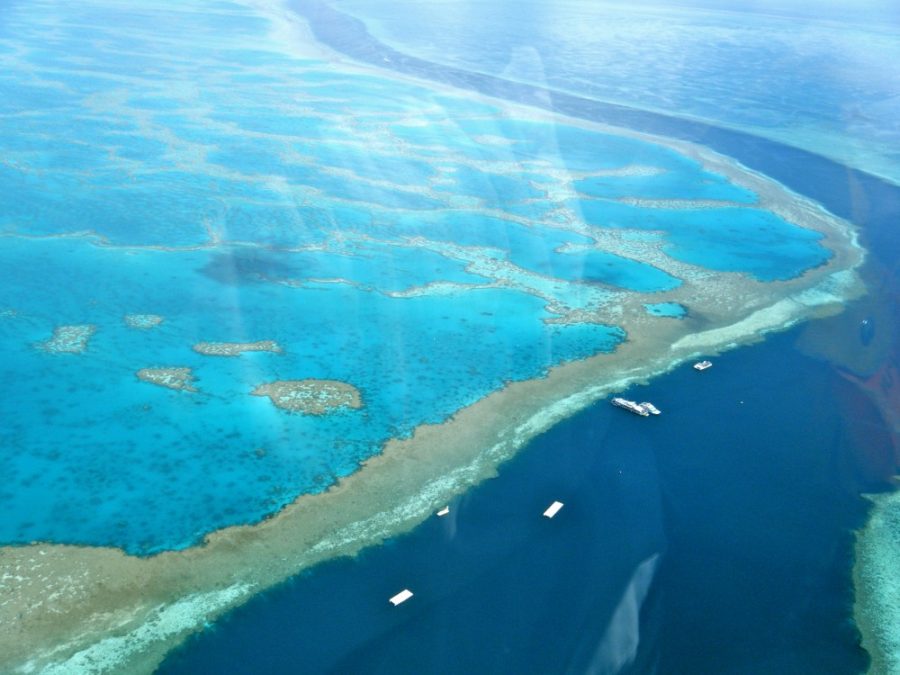In the midst of spring holidays and preparation for finals, it may be interesting to note that there were amazing discoveries in science over the past week, ranging from ways to protect unborn babies against whooping cough to an eel’s “sixth sense.”
Coral bleaching continues to affect Great Barrier Reef
Aerial surveys performed by researchers at Australia’s James Cook University have revealed that the Great Barrier Reef is undergoing a second mass bleaching event.
This is the second mass coral bleaching in the area within the last 12 months; scientists were not expecting another event of this nature to occur within such a short timespan. While the coral is capable of healing, it needs more than a year to do so. Consequently, the second event could signal trouble for the reef.
Coral bleaching occurs when the algae that lives with and feeds coral is forced to migrate elsewhere due to unfavorable conditions. The bleached coral isn’t dead, and it is possible for it to revive itself if conditions become tolerable for the algae. However, continued bleaching can lead to coral starvation.
El Niño and the warmer water it brings caused the first bleaching event. The scientists at James Cook University suspect the second event was a direct result of global warming and warn that the Great Barrier Reef is in danger if steps aren’t taken to curb greenhouse gases released into the atmosphere.
RELATED: Great Barrier Reef: dead, dying, or still vibrant?
Eel migration aided by Earth’s magnetic field
A century-long mystery has been solved thanks to the discovery that eels are capable of sensing the Earth’s magnetic field and using it for navigation.

When a European eel reaches maturity, it migrates from the North Atlantic Sargasso Sea to European rivers, switching habitat from salt water to freshwater.
The eels’ mode of navigation had baffled researchers, especially because the stretch of sea was found to have no distinguishing features that young eels could use as landmarks.
Researchers from University of Miami in Florida and the University of North Carolina in Chapel Hill discovered that the eels completed this journey using the Earth’s magnetic field as a guide.
Like sea turtles, the eels were able to use the magnetic field to orient and guide themselves.
It allowed them to stay on course, even when taking a detour to enter the fast-moving Gulf Stream.
RELATED: Beefy bugs: antibiotic-resistant bacteria pose threat to health
Vaccine for the mother may prevent whooping cough for her baby
Recent research out of Oakland, California’s Kaiser Permanente Vaccine Study Center indicates that expecting mothers who receive the Tdap (tetanus-diphtheria-acelluar pertussis) vaccine, designed to protect against both tetanus and whooping cough, were much more likely to have babies unaffected by whooping cough.
Of the 150,000 babies studied, 17 contracted whooping cough, only one of whom had been born to a mother who received the Tday vaccine during pregnancy.
The resistance provided by their mothers prevents babies from contracting whooping cough for over two months, around when an infant would receive their own first vaccine against the illness. Antibodies are shared between the mother and her child during pregnancy, allowing the child to develop a resistance before birth.
Device captures water from dry, desert air
A multi-university team led by a researcher at MIT has created a device that collects water from the air, opening the door to a possible solution to a worldwide water shortage.
The device is composed of a material with a network of microscopic pores that absorb water whether in a shaded or lit area. When placed in the sun, however, the trapped water is heated into a vapor and released from the pores, then cooled by an internal condenser and turned back into a liquid.
While still just a prototype, the device can produce enough water in a low-humidity area for an adult to survive in the desert in approximately an hour. The researchers involved hope that—if the device continues to work successfully—they will be able to build bigger models that can tap into the untouched reservoir of water within the atmosphere.
Follow Nicole Morin on Twitter.















